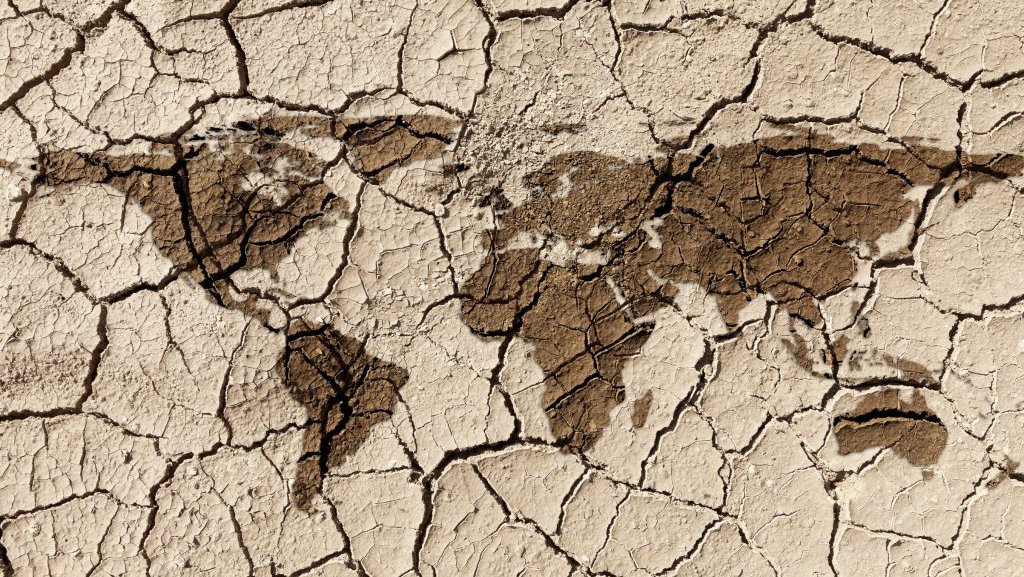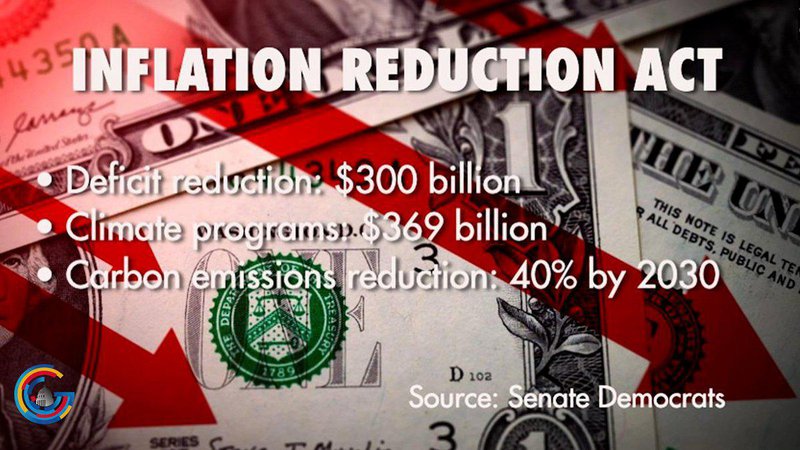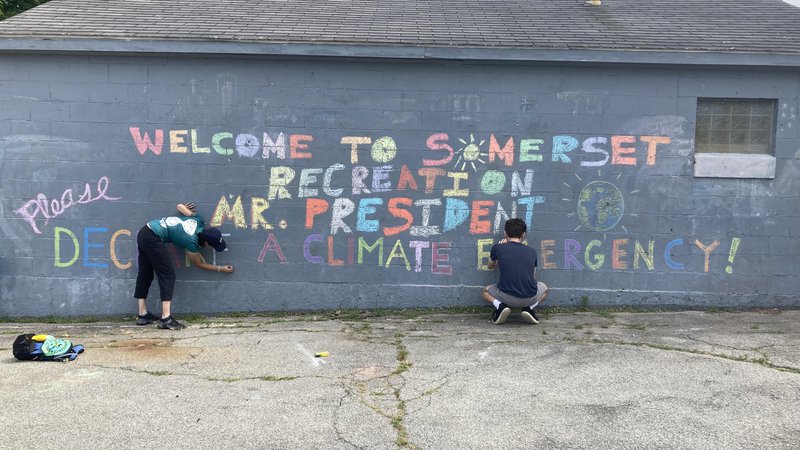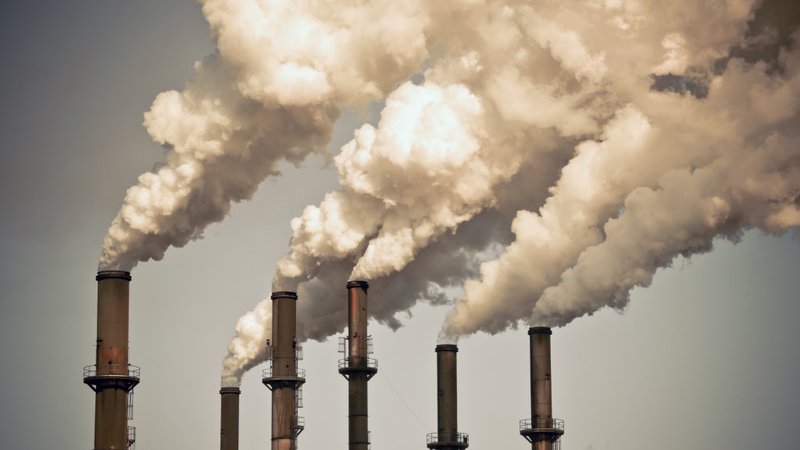
Looming widespread water shortages
The World Health Organization estimates that by 2025, half of the world's population will be living under water-stress. Lack of clean drinking water is the most immediate threat, but droughts caused from human-induced global heating and the pollution and destruction of ecosystems has other far reaching effects. As sources of water dry up, animals will move into areas populated by humans, increasing the risk of zoonotic disease, crops will suffer, forcing mass climate migration, the risk of wildfires increase, and pollution will build up, making it difficult for people to meet basic sanitation needs.
Lowering greenhouse gas emissions, protecting wetlands, cutting back on animal agriculture, stormwater capture, and groundwater management are some of the solutions that are being pursued by environmental organizations and by states and countries that are already suffering from severe droughts. Curbing global population growth is another important consideration.
Read a round-up of the headlines below:
Stanford Earth, "The effects of climate change on water shortages"
"If global temperatures continue to rise, rainfall will increasingly become a beast of extremes: long dry spells here, dangerous floods there – and in some places, intense water shortages. As early as 2025, the World Health Organization estimates that half of the world’s population will be living in water-stressed areas.
“Rainfall is somewhere between beautiful and a nuisance,” said hydrologist Steven Gorelick, director of the Global Freshwater Initiative at Stanford’s Woods Institute for the Environment. “It’s not something you immediately drink.” So when water supplies come up short, it’s often a slow-moving disaster, with effects that accumulate – and linger – for years until rainfall rates seem to return to normal. As a result, Gorelick said, “There’s a very short memory of the last drought.”
Although a shortage of clean drinking water is the most immediate threat to human health, water scarcity can have far-reaching consequences. Diminished flows in rivers and streams can increase concentration of harmful pollutants. Researchers including Rosemary Knight and Scott Fendorf at Stanford’s School of Earth, Energy & Environmental Sciences (Stanford Earth) have shown that overtaxed aquifers in some places may become more vulnerable to contamination. When waterways run dry, animals may seek out drinking water from places where people live, increasing the likelihood of contact between humans with wildlife and any disease-carrying insects they host. Drought can also elevate risk of wildfires and dust storms that may lead to irritation of lungs and airways."
Phys Org, "Climate change is altering terrestrial water availability"
"The amount and location of available terrestrial water is changing worldwide. An international research team led by ETH Zurich has now proved for the first time that human-induced climate change is responsible for the changes observed in available terrestrial water...
"We were able to show that this global pattern of observed changes is consistent with the effects of human-induced climate change and highly unlikely to be the product of natural fluctuations," says Ryan Padrón, a postdoc in Seneviratne's group and lead author of the study.
It is not possible to prove the effect of climate change directly in an observation series. To verify its role, the team used what is known as the attribution method. This involves a comparison of observational series with simulations of climate models calculated both with and without human-made CO2 emissions. "If only the model simulations with human influence agree with the pattern of observed changes, as is the case here, we can conclude that a response to climate change is verifiable in the observations," explains Padrón."
Rome News Tribune, "Water crisis forces Indian farmers to rethink their crops "
"On a scorching summer day in northern India, Ajay Singh sat next to his water pump and scanned his 10 acres of farmland. He once used to grow rice each season to bring in about 150,000 rupees ($2,000) a year, well above the average income in the world's second-most populous country.
Now on six acres he's cultivating pearl millet, cow peas, bottle gourd and corn — crops that consume about 80% less water than rice, and also use less labor, fertilizer and electricity. While a water conservation program pays him 7,000 ($93) rupees per acre to plant them, it's still a gamble: Unlike rice, which the government always buys at a set price, these crops have no guaranteed market.
"I am taking this risk because I have a passion to leave enough water for future generations," Singh said from his farm in Karnal, an area a few hours drive north of the capital, New Delhi.
India's 1.3 billion people have access to only about 4% of the world's water resources, and farmers consume almost 90% of the groundwater water available. As global temperatures rise and overuse of water depletes existing resources, the threat to lives and businesses in Asia's third-largest economy is projected to grow."
Global Risks Insight, "The growing water crisis in China"
"China’s artificially low pricing of water has encouraged poor water management by creating a disjuncture between actual and market water prices, promoting highly inefficient use in industry and agriculture, and persistent pollution of scarce freshwater supplies. A 2009 World Bank report stated that China was using ten times more water per unit of production than the average industrialised country, and that pollution has made the water in 19% of main rivers and 35% of reservoirs useless for agriculture and industry.
Climate change exacerbates this situation. The melt-water from the Qinghai-Tibetan Plateau significantly feeds the Yangtze and Yellow Rivers; the Yangtze alone supports 584 million people and serves an economic zone that constitutes 42% of GDP. According to The State Laboratory of Cryospheric Sciences in China, run off into the Yangtze decreased by 13.9% during the 1990s."
NRDC, "California-Chile Water Nexus 1: Urban Drought Solutions"
"Experts are predicting another serious drought for California and the western United States this summer, going as far to portend a rare “megadrought.” Diminishing snow cover and an extremely dry winter in the north are stoking fears and leaving policymakers, farmers, businesses and residents looking for urgent solutions. On the other side of the globe, Chile is in the midst of its own 11-year megadrought..
Policymakers, experts, and stakeholders are developing a “Portfolio Approach” to improve local reliability and resilience, protect the environment, and save money. This approach includes: 1) improving water efficiency, 2) investing in stormwater capture, 3) expanding recycled water, and 4) advancing groundwater management through the Sustainable Groundwater Management Act (SGMA)."
The Guardian, "US rivers and lakes are shrinking for a surprising reason: cows"
"A recent analysis published in Nature found cattle to be one of the major drivers of water shortages. Notably, it is because of water used to grow crops that are fed to cows such as alfalfa and hay. Across the US, cattle-feed crops, which end up as beef and dairy products, account for 23% of all water consumption, according to the report. In the Colorado River Basin, it is over half.
“There are many smaller streams that have been dried up completely,” said Brian Richter, the study’s lead author and the president of Sustainable Waters, a water conservation non-profit. “We’re only seeing the beginning of what’s going to become a major natural resource issue for everybody living in the western United States.”
Agriculture accounts for 92% of humanity’s freshwater footprint across the planet, and has long been identified as a major culprit in drought. But the new study suggests how extreme its impact can be."
Take Action
Related Stories:
Featured:
-
The third annual Week of Rebellion is full of opportunities for celebration and action!
-
Our government had the opportunity to finally turn our state into a "climate leader," and they decided yet again to prioritize profits and political posturing over the well-being of residents.
-
Prominent climate scientists and activists demand immediate climate action in the United States.
-
Stop the Fossil Fuel Industry, Now: List of events for Extinction Rebellion Boston's September week of rebellion
-
A compilation of books, movies, articles, and ways to take action to protect Black lives
-
Nadia Colburn, PhD and member of Extinction Rebellion Media team, discusses how to talk about the climate and ecological crisis with family and friends.
Upcoming Events:
-
Sun Jan 4th @ 3:30 p.m.
-
Sat Jan 10th @ 3 p.m.
-
Thu Jan 15th @ 7:30 p.m.









